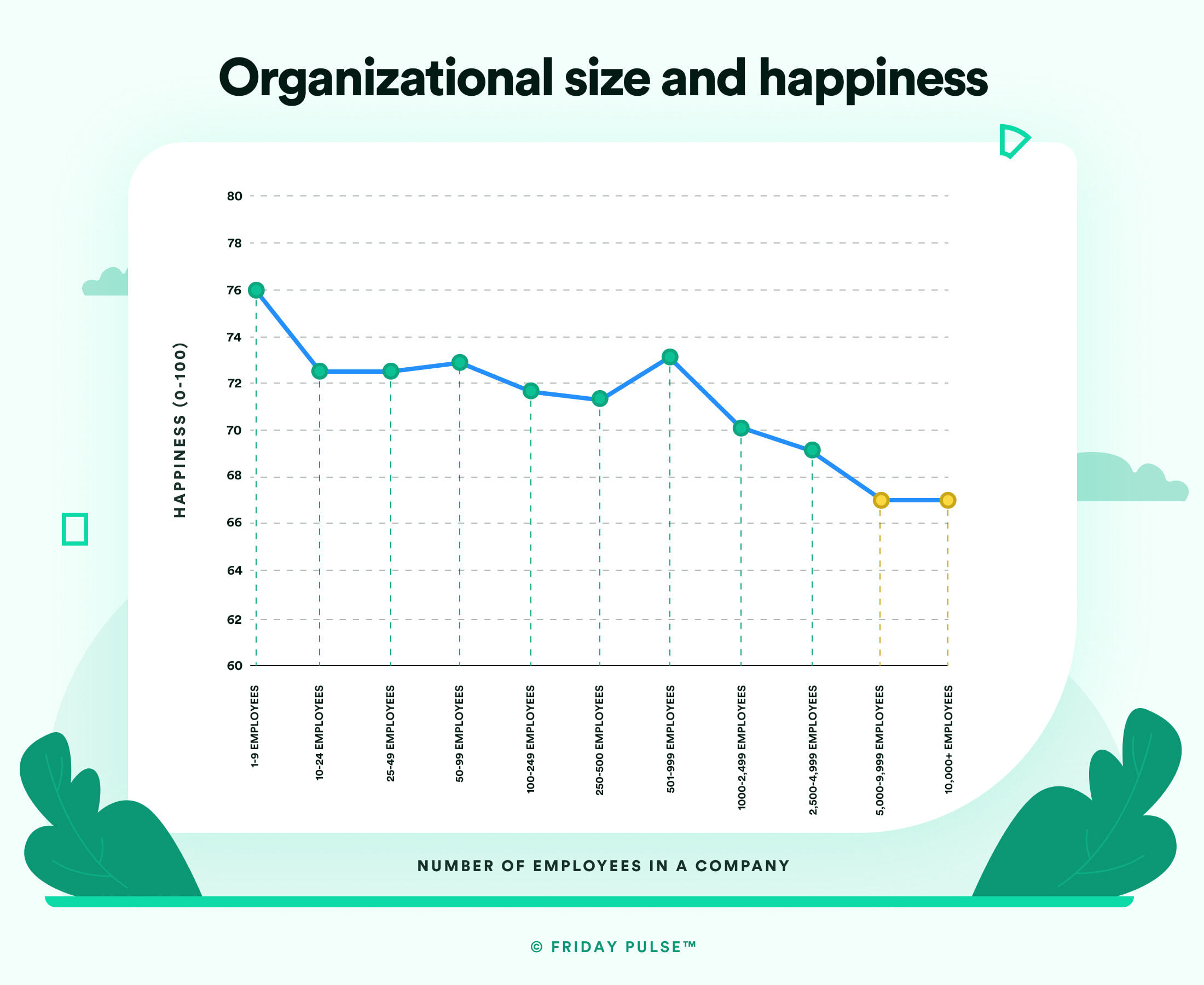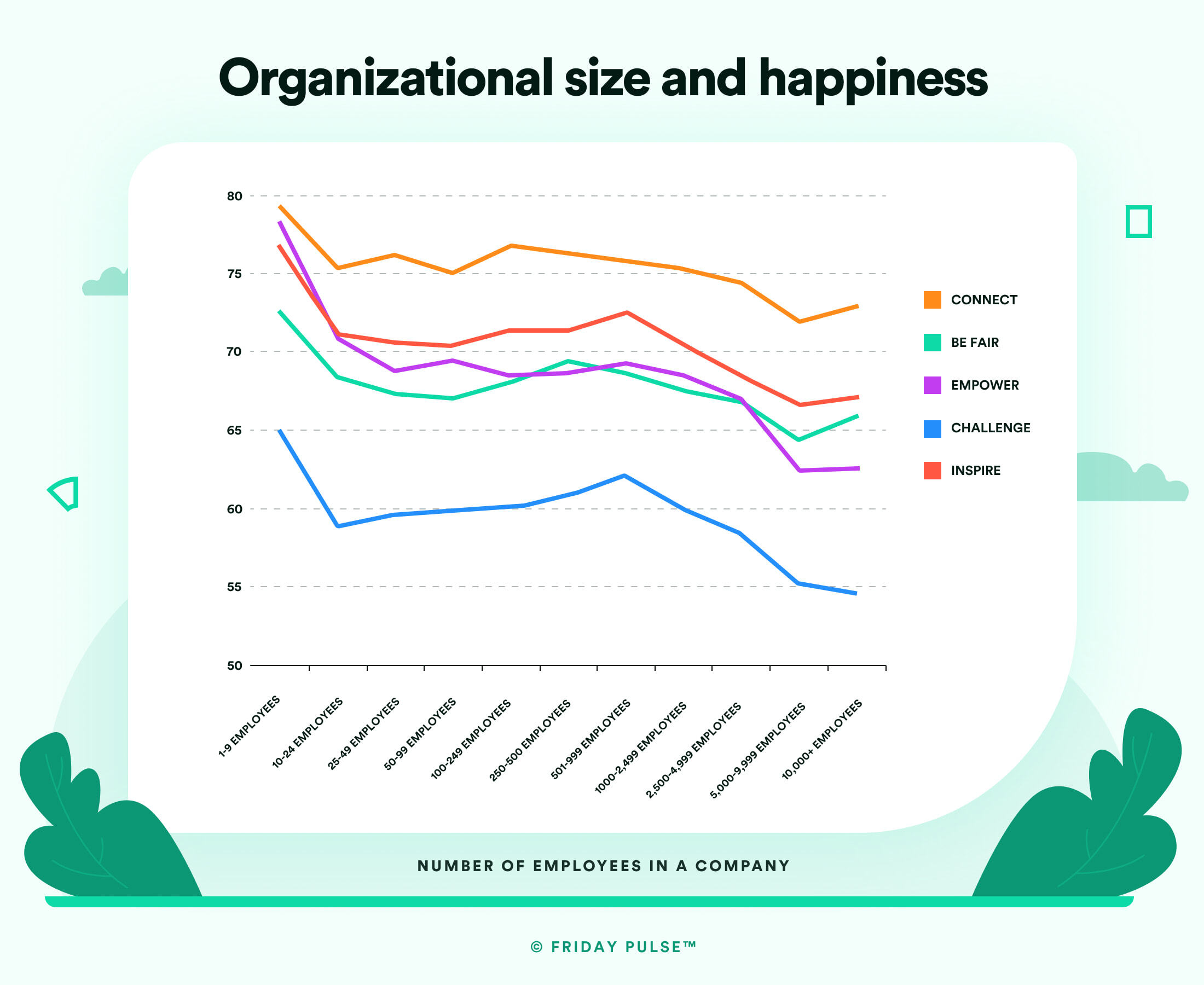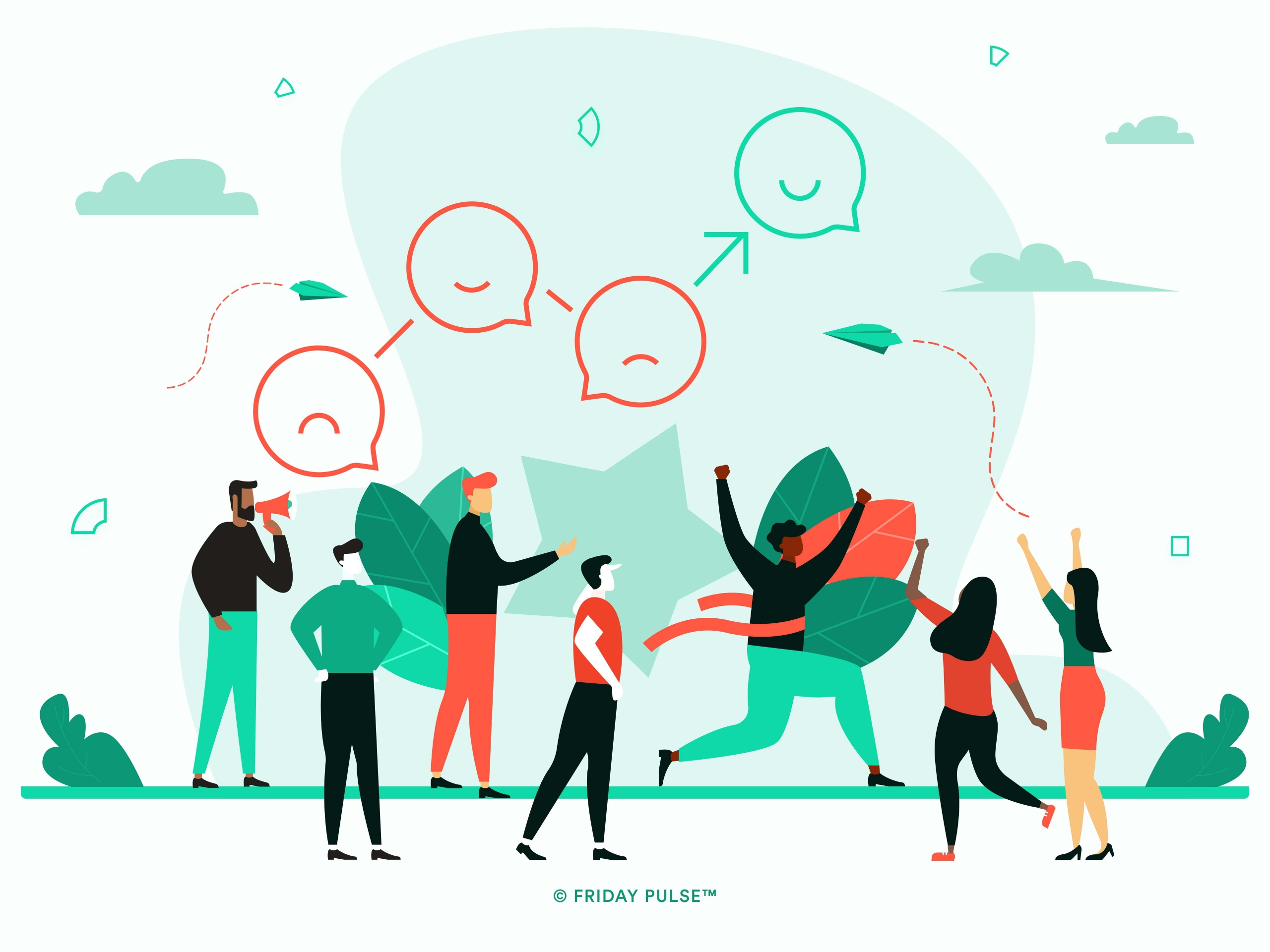What is organizational size?
Organizational size refers to the scale or magnitude of an organization, typically measured by the number of employees, revenue, market reach, or other relevant metrics. It represents the scope and scale of operations within the organization.
Classifying company size by employees
Companies are often classified into different categories based on the number of employees they have. These categories can vary depending on the specific definitions used, but here is a commonly used classification based on the number of employees:
- Micro-enterprise: Usually defined as a company with 1 to 9 employees. These are typically small businesses or startups with a very limited workforce. Low morale can be both more destructive and easier to shift in organizations of this size.
- Small enterprise: Generally refers to a company with 10 to 49 employees. Small enterprises are often characterized by a close-knit team and a relatively small operational scale.
- Medium-sized enterprise (SME): Typically considered as a company with 50 to 249 employees. SMEs are larger than small enterprises but are still smaller in scale compared to large corporations.
- Large enterprise: Generally denotes a company with 250 or more employees. Large enterprises often have significant resources, broader market reach, and more complex organizational structures.
Different organizations and institutions may use slightly different ranges or criteria to classify company size based on employees.
Why is the size of an organization important for happiness at work?

Our data is based on a pool of 22,000 people and shows that larger
organizations have less happy people. The chart above is free from the
influence of income and job roles, so we see that the happiest
organizations are the smaller ones, with people that are inspired about
a cause.
The reasons why large organizations are unhappy are many. The size can
be dehumanising. People may feel unrecognised and unappreciated.
Hierarchy limits variety, so the size of organizations means that not
everyone knows each other.
The Five Ways to Happiness at Work and Organizational Size

The Five Ways to Happiness at Work are the drivers of positive
culture and happiness within the workplace. They are:
1. Connect
2. Be Fair
3. Empower
4. Challenge
5. Inspire.
Each of these factors has a direct impact on the happiness levels within a company. Interestingly enough, The Five Ways to Happiness at Work are impacted by organization size too.
In the graph above, Empower — sharing responsibility which can
unleash innovation and collaboration — shows the most dramatic drop from
being the second-highest to the second-lowest scoring metric. The sharp
drop makes sense because autonomy gets lost within larger organizations. Employees don’t usually get to shape what happens
within large companies.
What the data boils down to is this: your company may have an
inherent flaw in its structure due to its size, which prevents employees
from being truly happy with their experience of work.
To drill down into these factors on a personal basis, take our free (anonymous) happiness at work test.
How to improve your organizational structure
You can’t cut up a large organization without serious problems, but how
do you change your organizational structure to be happier?
In a sense, the task is creating a village in a city — a group with
tight connections — to mitigate the problems of size. Remember, people’s
work experience is proximal. Appreciation from your teammates and how
you get along with your boss affects you more than what you think of the
CEO.
Here are our recommendations on how you can improve your organization’s
structure.
1. Empower your people
Because empowerment is something large organizations struggle with, give
your people more control. Large organizations tend to have more tightly
defined roles and outputs. As a result, people don’t get to shape,
impact or influence their roles.
As a team leader, it’s your job to make roles more interesting for
your people. The easiest way to do this is to play to their strengths.
Identify the strengths of your team and match them to the areas where
people can add the most value.
2. Break the silo and hierarchy
With so many organizations now remote, one of the biggest threats is
that everyone will get siloed in some way. Typically, innovation in a
hierarchy has to go up and down the structure, leading to siloed teams.
In teams made up of members across functions, teams can work on problems
not only in their function but gain insight from other departments as
well. Hierarchies should make way for a structure that functions as a
network of teams rather than the traditional organizational chart.
With fewer middle managers, there are more people to do the work and
make crucial decisions. The added space also means that teams are not
only more creative in coming up with solutions, but they’re happier as
well.
3. Learn from other innovative organizations
In recent times, many companies have completely redefined the
way they do business. Some aren’t returning to traditional office
structures, and some are implementing four-day work weeks to mitigate
burnout. What works for your organization is something only you can
determine, but here are some that stand out to us:
- McKinsey shared a great piece on organizations who used the pandemic to adapt their processes.
- Zappos has adopted a system that’s a hybrid between their much praised
holocracy and
self-organization — a marketplace system where teams operate like
small business and manage their own profit and loss statements. It’s a
fascinating way to drive success.
- If there is a place that is synonymous with hierarchy, it’s the
military. That’s what makes AFWERX unique. They are a community of US Air
Force innovators that use academic and non-traditional contributors to
bring innovation to the Air Force. Watch our Founder and CEO's keynote speech at an AFWERX Fusion virtual event.
How we can help
Friday Pulse's strength is that it provides focused action points at both team and individual level - so managers can act quickly, while senior leaders get real-time micro and macro insights on organizational sentiment. Starting with the team means that the results are scalable and effective no matter the organization size.
If you'd like to know more, please contact our Relationship Manager, Megan, on megan@fridaypulse.com







